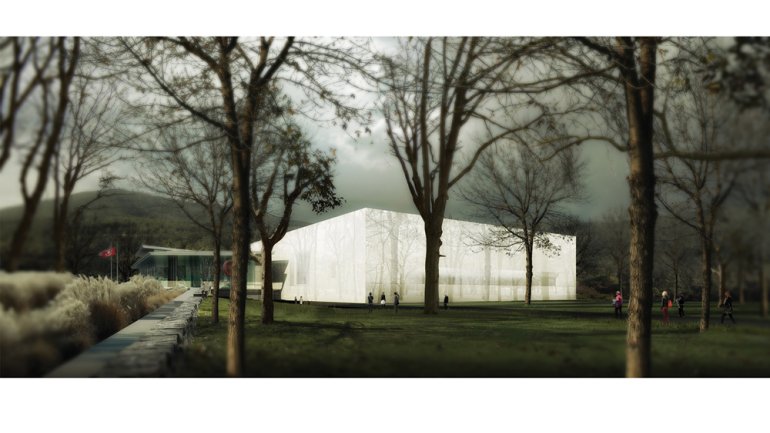Natural Progression
Natural Progression
The Corning Museum of Glass’ North Wing expansion sheds new light on the collection.
This March, the Corning Museum of Glass will unveil a dramatic addition to its upstate New York campus: a 100,000-square-foot North Wing that nearly doubles the museum’s size. The expansion includes new digs for the contemporary glass collection and a 500-seat amphitheater-style hotshop, among the largest such demonstration spaces in the world. We asked executive director Karol Wight to tell us more.
What motivated the museum to expand on this scale?
We have a comprehensive collection of glass that ranges from the second millennium BC to the present day. What we have seen, in the contemporary area in particular, is that as our knowledge of glass technology improves artists are able to exploit glass in larger and larger ways. The current gallery foot-print in the museum is not really suitable for displaying contemporary sculpture on the scale of what we have been collecting – we desperately needed a new space to showcase our collection.
The new state-of-the-art hotshop is also greatly expanded. How did you approach its design?
We sent a team around the country to visit museums that have established hotshops – like Toledo – and also artists’ studios. Unfortunately I couldn’t go on that trip, although I was wildly jealous of it.
We interviewed [people] who work in those various hotshops to understand what was working for them and what wasn’t. And we got a lot of great feedback that went into our design; a lot of it was really to do with personal comfort. So we developed an air-conditioning system that will blow cool air on you while you’re working with hot glass and make it a much more enjoyable experience.What other elements made it into the design?Windows! We heard a lot about natural light. We have north- and south-facing windows; we have a skylight across the ceiling of the space. It is a very large space in which to work, and I think the glass artists who come here will be very pleasantly surprised
In the new 26,000-square-foot contemporary gallery space, the collection will be organized into easily relatable themes, such as the body and nature. What influenced that choice?
Curator Tina Oldknow [“Masters”], in the 10-plus years she has been here, has had the opportunity to install the modern and contemporary collection in a number of different ways. She has always wanted to show multiple works by a single artist, for example, and we will see that in the new gallery. But she felt that in order for our visitors –many of whom aren’t familiar with contemporary art – to really have a way into the collection, they needed something to help them comprehend the works that are on view within each of the galleries. And she chose to follow this thematic arrangement.
I think it works wonderfully. It’s a great way to introduce the works and to juxtapose them in provocative ways. As visitors enter the nature gallery, for exam-ple, they will see works that are inspired by nature, works that are a commentary on nature.
Nature appears to be a big theme in the expansion overall – most obviously in the abundant skylights and windows.
Design architect Tom Phifer was very taken by the landscape here and intended to relate the collection to the landscape. But putting that aside, when he really began to work with us – and appreciate and understand the nature of glass – he also understood that glass is not as light-sensitive as paintings or furniture or other decorative arts. Glass responds really well to natural light: It presents a different vantage every time you’re looking at a piece, because the time of day will change. The weather will change. And the piece will seem new and fresh.
The windows on the building exterior – very large, panoramic windows that connect the visitor back to the landscape – are also really wonderful. Our visitors will have the opportunity to step into the gallery, to enjoy the collection, and to learn and find some personal meaning within the art. But then step out of those gallery spaces and get a view to the outside; get a chance to refresh their eyes, to do something different, to sit down, to take a break. And then move back into the collection.
Dakota Sexton is assistant editor for American Craft.

